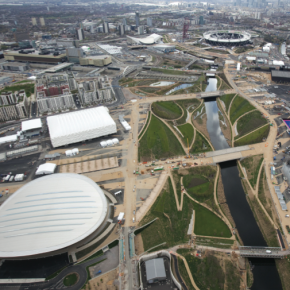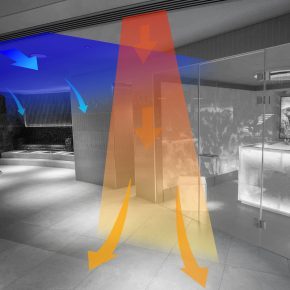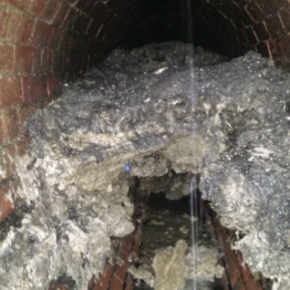
How SuDS can help with urbanisation and the housing crisis
Richard Leigh, group development director at Lanes for Drains, explains why we need SuDS, how they are designed, their benefits, and provides examples of SuDS in action, in the latest issue of ABC&D Magazine.
Sustainable Drainage Solutions (SuDS) are systems used to deal with distributing excess surface water in a way that imitates natural drainage processes as closely as possible. They are policies that have been adopted by the UK Government, passed into law and are now being applied to all new developments across the country.
Making the case for SUDs
With urbanisation happening at an unprecedented rate across the globe, SuDS are the first line of defence against flash floods and localised flooding. Unlike soil, man-made surfaces, such as concrete, bricks and mortar, are non-porous.
With SuDS, excess surface water is distributed and discharged into water courses using a combination of man-made and natural components.
SuDS are increasingly important for major conurbations mall over the world. In cities like London, Birmingham and Manchester, increased seasonal rainfall and flash flooding – brought about by a changing climate – taxes our drainage systems to their limits. With the UK gripped by a housing crisis, there is pressure to build houses as quickly as possible to ensure people have access to affordable housing.
As such, more man-made surfaces can divert surface water to unintended places, or even reduce, or stop, natural drainage. Adhering to SuDS ensures our towns and cities can deal with excess water without causing localised flooding or other drainage issues.
Designing SUDs
SUDs come in different shapes and sizes and are made up of numerous components. Each part leverages different approaches to manage water flow, volumes and water quality. Some parts of SUDs can provide significant benefits to the local environment and improve the general amenity of the area.
Generally speaking, components of SuDS are divided into two categories: Green, soft or landscaped components including vegetation, ponds, moorland or other natural features to deal with excess water, and grey, hard or engineered components, which are generally man-made and include culverts, piping, causeways or other structures. Each component serves a specific purpose:
- Infiltration – Allows water to soak into the ground.
- Conveyance – Deals with the transportation of water from one location to another.
- Attenuation – Relates to slowing down water flows.
SuDS may employ a combination of these components to provide a comprehensive drainage strategy, leveraging both man-made and natural drainage components.
The benefits of SUDs
Researchers, scientists and industry experts are unanimous in their assessment that our society needs a more sustainable approach to managing excess surface water. However, besides managing additional surface water in major cities and combatting localised flooding, SuDS have other benefits, including:
- Encouraging surface water to run-off where it falls, instead of collecting in a pool.
- Protecting or improving water quality during run-off. For instance, on industrial sites, preventing chemicals and other debris from being washed into, and polluting, the water system.
- Making the environment better for those living in the local community
- Providing opportunities for evapotranspiration to take place, with vegetation such as trees and plants.
- Providing or improving an attractive habitat for wildlife in urban areas. For example, adding soil and trees to an urban area. Fundamentally, all of these factors create better places to live, work and play.
SUDs in action
SuDS are being implemented across the length and breadth of the UK. Predominantly, they are being applied in urban settings but some are being installed in rural areas to provide sustainable drainage solutions.
The Queen Elizabeth Olympic Park in Stratford, East London, (pictured above) is one example of a series of SuDS components working in tandem. Originally designed for London 2012, the park features porous asphalt strips that collect and treat any run-off generated. The strips then convey water into trenches below, which contain perforated pipes. The piping siphons excess water to catchpits, finally discharging the water into nearby watercourses.
The park was built on brownfield land which was used as a depository for building rubble from properties demolished during World War II. As such, the site was contaminated throughout, so planners had to be careful not to unintentionally distribute some of the hazardous materials into nearby watercourses when installing SuDS.
SUDs are here to stay
The Queen Elizabeth Olympic Park is just one example of how SuDS can help with the regeneration of derelict land. With the housing crisis encouraging rapid property development in the UK and with urbanisation happening on an unprecedented scale, SuDS are vital to ensure we deal with the housing crisis and urbanisation in the right way.
EJ250
Latest news

1st April 2025
Gilberts Takes Thermal Comfort to New Heights
Gilberts Blackpool is continuing to build on its reputation as a pioneer with the unveiling of ThermaAstute™ – the most extensive range of thermally sensitive diffusers in the market.
Posted in Air Conditioning, Articles, Building Industry News, Building Products & Structures, Building Services, Facility Management & Building Services, Heating, Ventilation and Air Conditioning - HVAC, Innovations & New Products, Restoration & Refurbishment, Retrofit & Renovation, Sustainability & Energy Efficiency
1st April 2025
University of Bath Student Helps Vent-Axia Win Two Environmental Industry Awards
Leading ventilation manufacturer, Vent-Axia, is delighted that the valuable work University of Bath student Roben Els undertook during an industry placement at the company contributed to it winning two environmental industry awards.
Posted in Air Conditioning, Articles, Awards, Building Industry Events, Building Industry News, Building Products & Structures, Building Services, Heating, Ventilation and Air Conditioning - HVAC, Recruitment, Retrofit & Renovation, Sustainability & Energy Efficiency, Training
1st April 2025
Ahmarra: Fire Doors Designed for Hospitals & Healthcare Environments
Ahmarra is a leading UK specialist in fire doors for healthcare environments, having manufactured and installed thousands of bespoke doorsets for NHS hospitals across London and the South East.
Posted in Access Control & Door Entry Systems, Accessibility, Acoustics, Noise & Vibration Control, Architectural Ironmongery, Articles, Building Industry News, Building Products & Structures, Building Services, Building Systems, Doors, Facility Management & Building Services, Health & Safety, Interior Design & Construction, Interiors, Restoration & Refurbishment, Retrofit & Renovation, Security and Fire Protection, Timber Buildings and Timber Products, Wooden products
1st April 2025
Mitsubishi Electric: New intuitive, IoT-ready centralised controller offers instant access to 400 units
Mitsubishi Electric has launched a new user-friendly, touchscreen controller to offer full remote controllability, monitoring and reporting for up to 400 air conditioning units.
Posted in Air Conditioning, Articles, Building Industry News, Building Products & Structures, Building Services, Facility Management & Building Services, Heating Systems, Controls and Management, Heating, Ventilation and Air Conditioning - HVAC, Information Technology, Innovations & New Products, Pipes & Fittings, Plumbing, Posts, Research & Materials Testing, Retrofit & Renovation, Sustainability & Energy Efficiency
 Sign up:
Sign up: 